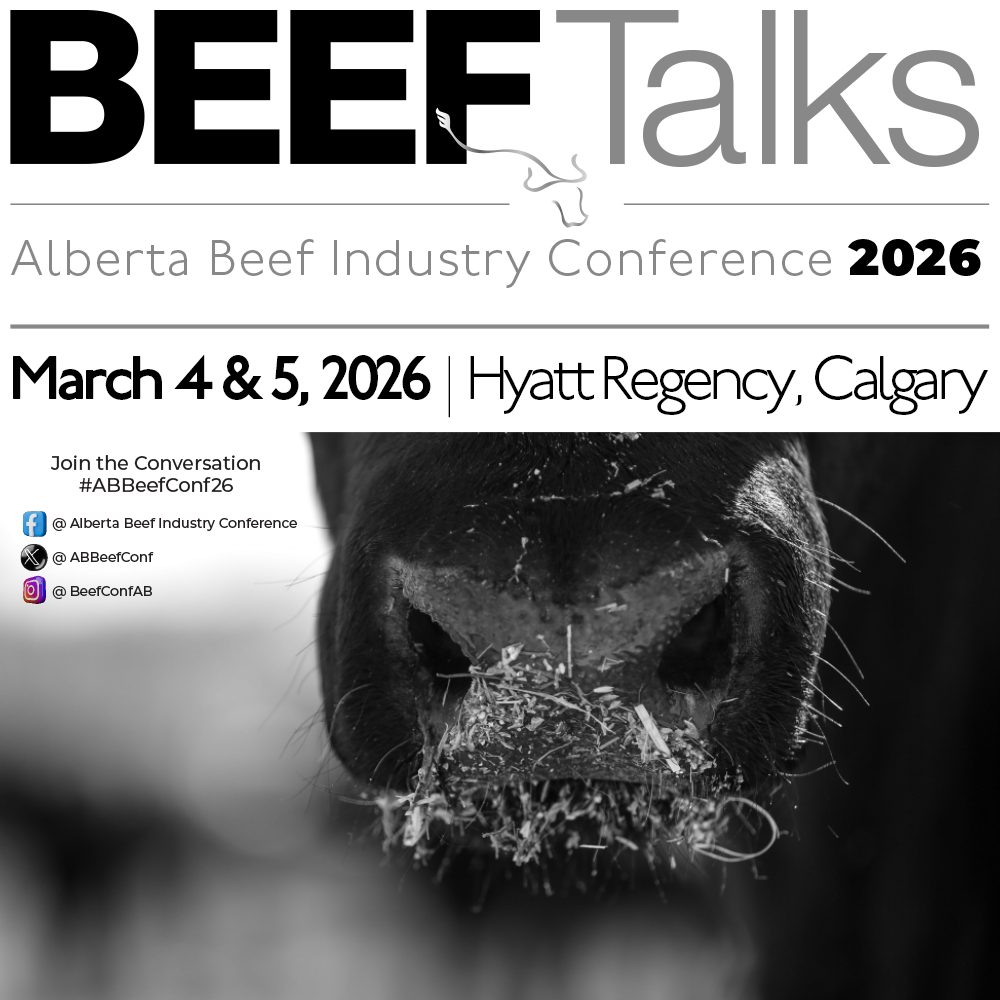AB Direct - Steers
Rail: 492.00-493.50 FOB feedlot (last week)
AB Direct - Heifers
Rail: 492.00-493.50 FOB feedlot (last week)
US Trade- Steers
Rail: 355.00-363.00 (IA, NE) last week
US Trade - Heifers
Rail: 355.00-363.00 (IA, NE) last week
Canadian Dollar
0.19

New data sheds light on changing face of cow-calf management in Canada
A new report from the Beef Cattle Research Council (BCRC) provides a comprehensive look at management practices and performance trends across Canadian cow-calf operations.
The Canadian Cow-Calf Adoption Rates and Performance Levels Report is based on multiple survey sources and academic studies. It was developed for BCRC by Canfax Research Services. It tracks adoption trends for 31 practices spanning reproductive management, calf health, herd management, forage use, environmental stewardship, record-keeping and more.
Top trends shaping production
Among the findings:
- Pregnancy checking remains stable across the country. In Western Canada, about seven in 10 producers check heifers and two-thirds check cows. In Eastern Canada, just over half of producers check both.
- Vaccination rates are high, with 94 per cent of respondents vaccinating at least one class of cattle for at least one disease—an increase compared to 2017.
- Weaning weights have decreased nationally since 2019, now averaging 39.5 per cent of mature cow weight, which is at the low end of the ideal 40–45 per cent range.
- Rotational grazing remains steady, practiced by roughly half of operations across both Western (50 per cent) and Eastern (48 per cent) Canada.
- Practices such as replacement heifer management, body condition scoring, mineral supplementation, manure management and recycling twine and plastics showed improvement or stability, but overall adoption remains relatively low.
- Extensive winter feeding (confined feeding) was the only practice to show a decline in adoption—potentially due to drought, feed availability, and pasture conditions. Most in-field winter feeding still relies on unrolled bales or feed delivery, though use of windbreaks and shelterbelts continues as a positive trend.
- Calf resuscitation practices were benchmarked for the first time, with results showing growing awareness and adoption of improved approaches.
Inside the numbers
The report emphasizes that high rates of adoption for any specific practice isn’t expected or appropriate. Economic, environmental and operational factors vary by region and production system, and the goal is to ensure producers have access to trusted, research-based information to support informed decisions.
For more detail — including regional insights on low-stress weaning, bull breeding soundness exams, pain control, feed and water testing and more — read the latest post on the BCRC website which includes a link to the full Canadian Cow-Calf Adoption Rates and Performance Levels Report.

